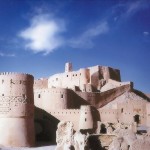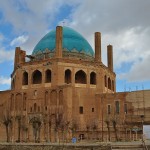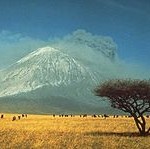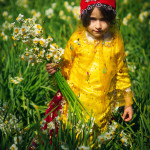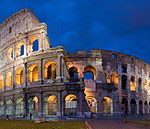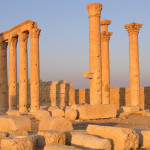By Paul-Anton Krüger, Isfahan
Translated by Google Translate Mobile
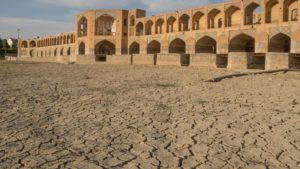 The evening sun bathes Isfahan in soft orange. By day it was 42 degrees, the brutal summer heat subsides. Families picnic under shady trees on the banks of the river. They cook tea, nibble sunflower seeds. For more than 2000 years people have settled here because of the water. The city was first mentioned in the year 20 AD by the Greek geographer and historian Strabon. A fertile oasis fed by the mountains of the Zagros. The Zayandeh-Rud rises at an altitude of almost 4,000 meters, the “life-giving river” in German.
The evening sun bathes Isfahan in soft orange. By day it was 42 degrees, the brutal summer heat subsides. Families picnic under shady trees on the banks of the river. They cook tea, nibble sunflower seeds. For more than 2000 years people have settled here because of the water. The city was first mentioned in the year 20 AD by the Greek geographer and historian Strabon. A fertile oasis fed by the mountains of the Zagros. The Zayandeh-Rud rises at an altitude of almost 4,000 meters, the “life-giving river” in German.
His bed in Isfahan is up to 150 meters wide, spanned by eleven bridges. Travel guides and postcards show pictures of the Si-o-se Pol, built in 1602, whose 33 pillars are reflected in the sluggish water. Or the two-story Pol-e Khadjou, half bridge, half weir. But it does not spray and rustle anymore, nothing is to be felt by the cooling spray. Their stairs, over which the water rippled, are dry. For two years, the once richest river in Central Iran has dried up. What remains is a desert of gravel and burst red soil. She runs like a scar through the city.
“Zayandeh is the soul of the city,” says Hassan Hosseini, 63, a retired teacher. He sits with his son and his family on the shore under a huge plane tree, in a park along the Zayandeh. “The river used to carry water all year,” he says. “But for seven or eight years he already fell dry in the summer.” The drought on the central plateau of Iran lasted a decade. “We keep coming here, this place has a deep meaning for us,” says Hosseini. The green, the water, that alone made people happy. But now even in her house on some days nothing comes out of the tap
35 million people in the country are threatened by water shortages
Isfahan has become a symbol of Iran’s water crisis, which has taken hold of large parts of the country. “334 cities with 35 million inhabitants are currently struggling with water shortages,” warned Water Affairs Minister Reza Ardakanian in April. For more than 100 cities and 17.2 of the 82 million Iranians, the Red Alert is red, he said, with another 17.3 million living in areas already affected by acute water shortages. The minister understands something about this, he is a professor of water management. Government officials warned five years ago that up to a dozen provinces could become uninhabitable by 2025.
There are repeated protests and clashes with police in Isfahan province in March and only a few days ago in Khuzestan province, which borders Iraq and the Persian Gulf. In the port city Khorramschahr and also in Abadan the tap water was dirty and salty for several days, allegedly because of a burst pipe. The police fired tear gas, there were reports that at least one protester had been injured by gunfire. Isfahan also witnessed demonstrations against the water shortage in 2013 and 2016 – and the government.
The reason for the shortage is not only that in Central Iran and other regions precipitation has been well below the long-term average for more than a decade. The overuse of water resources is exacerbating the situation, fueled by population growth since the Islamic Revolution in 1979 and questionable development projects. “The water crisis is a political crisis,” says teacher Hassan Hosseini on the dry bed of Zayandeh. “We hope for the grace of God to give us rain, but if the government does nothing, we will soon have no water left.”





